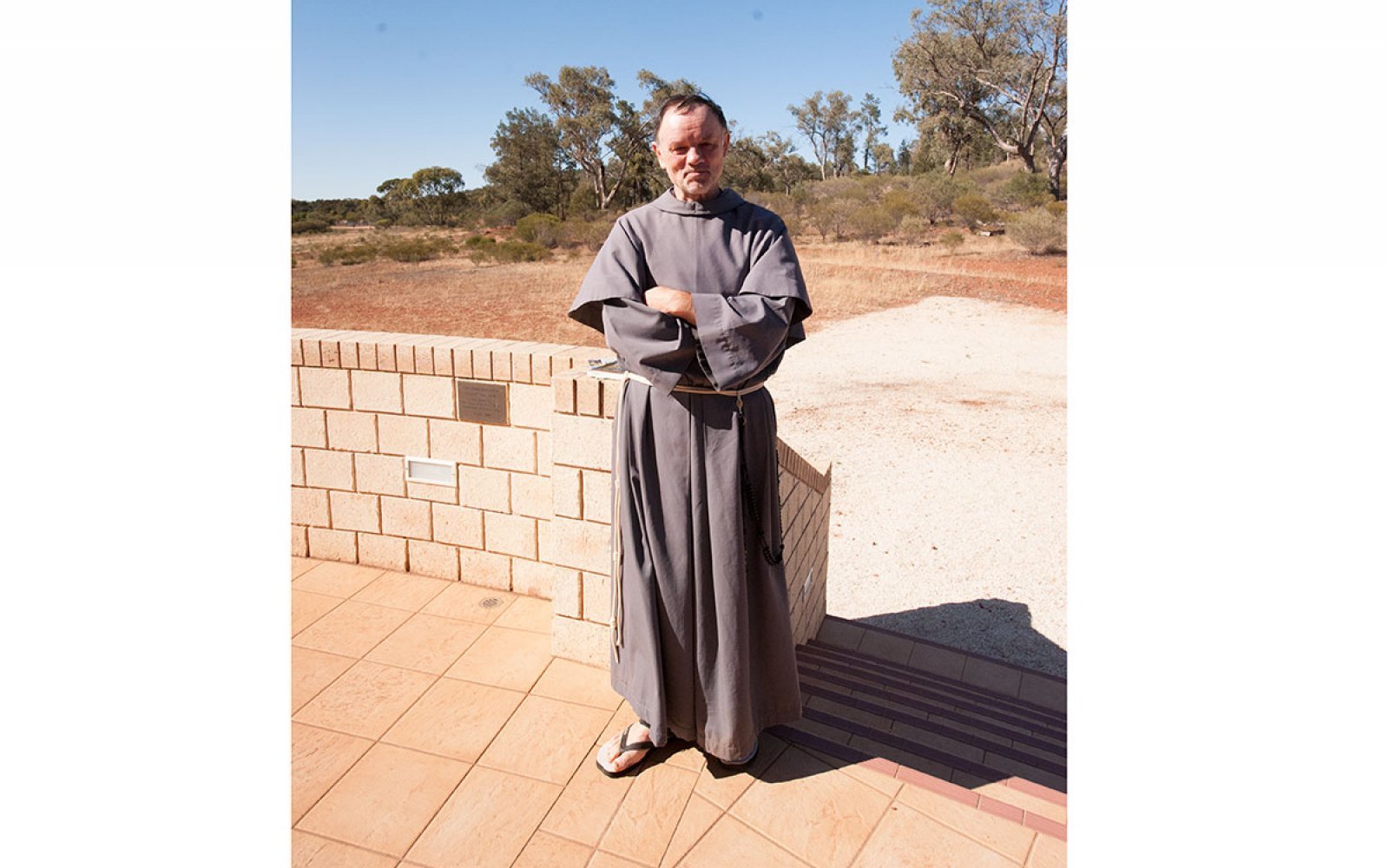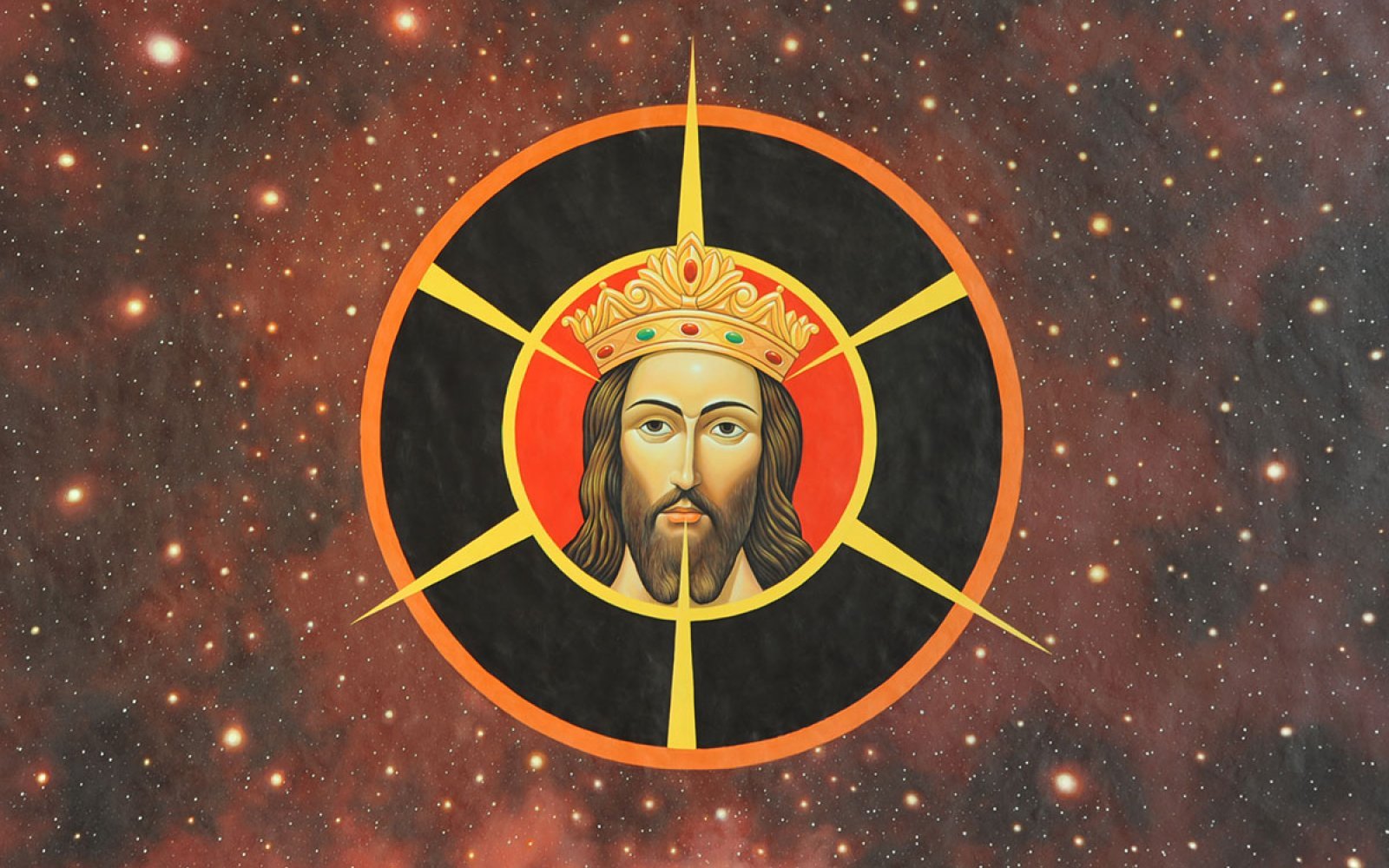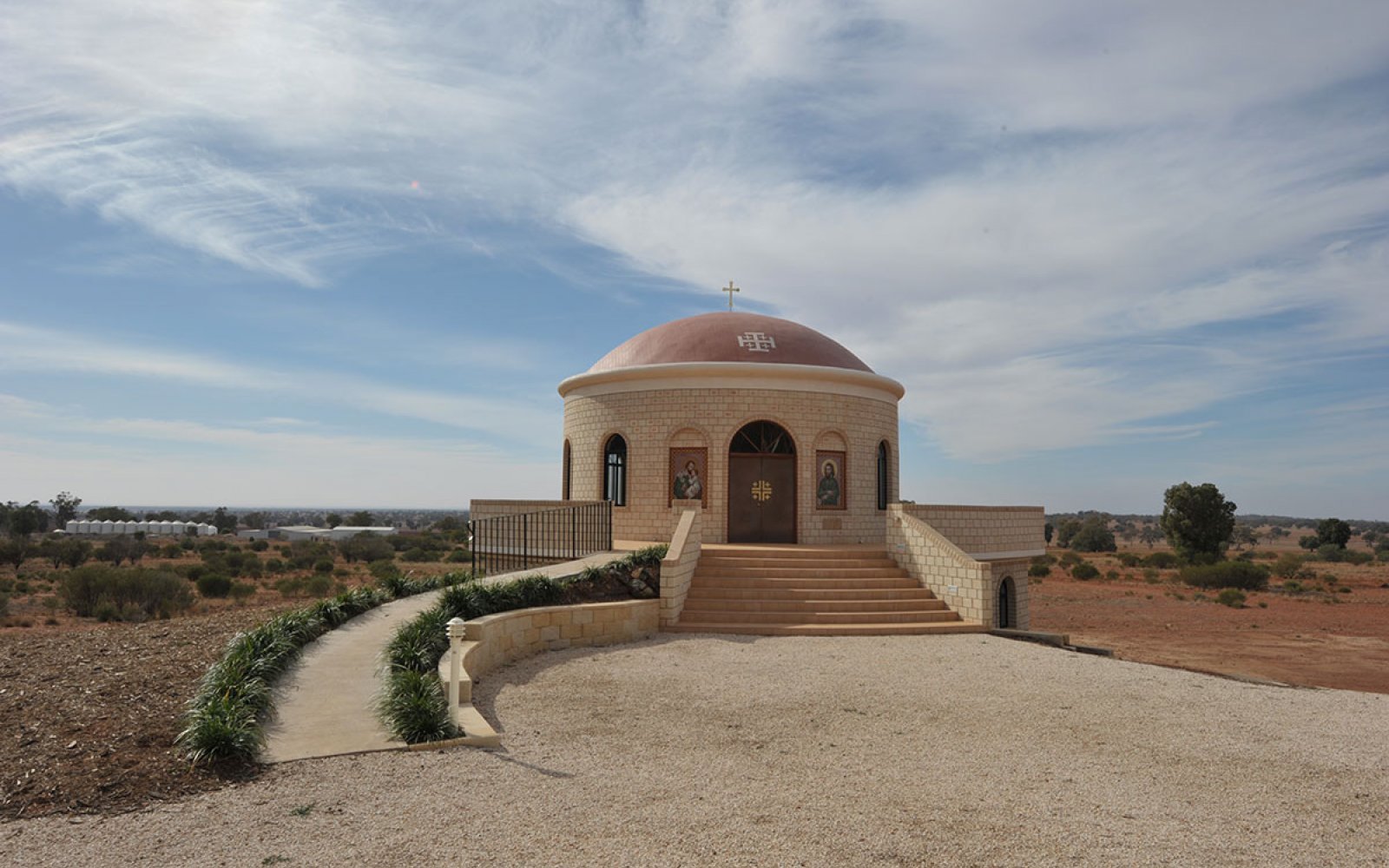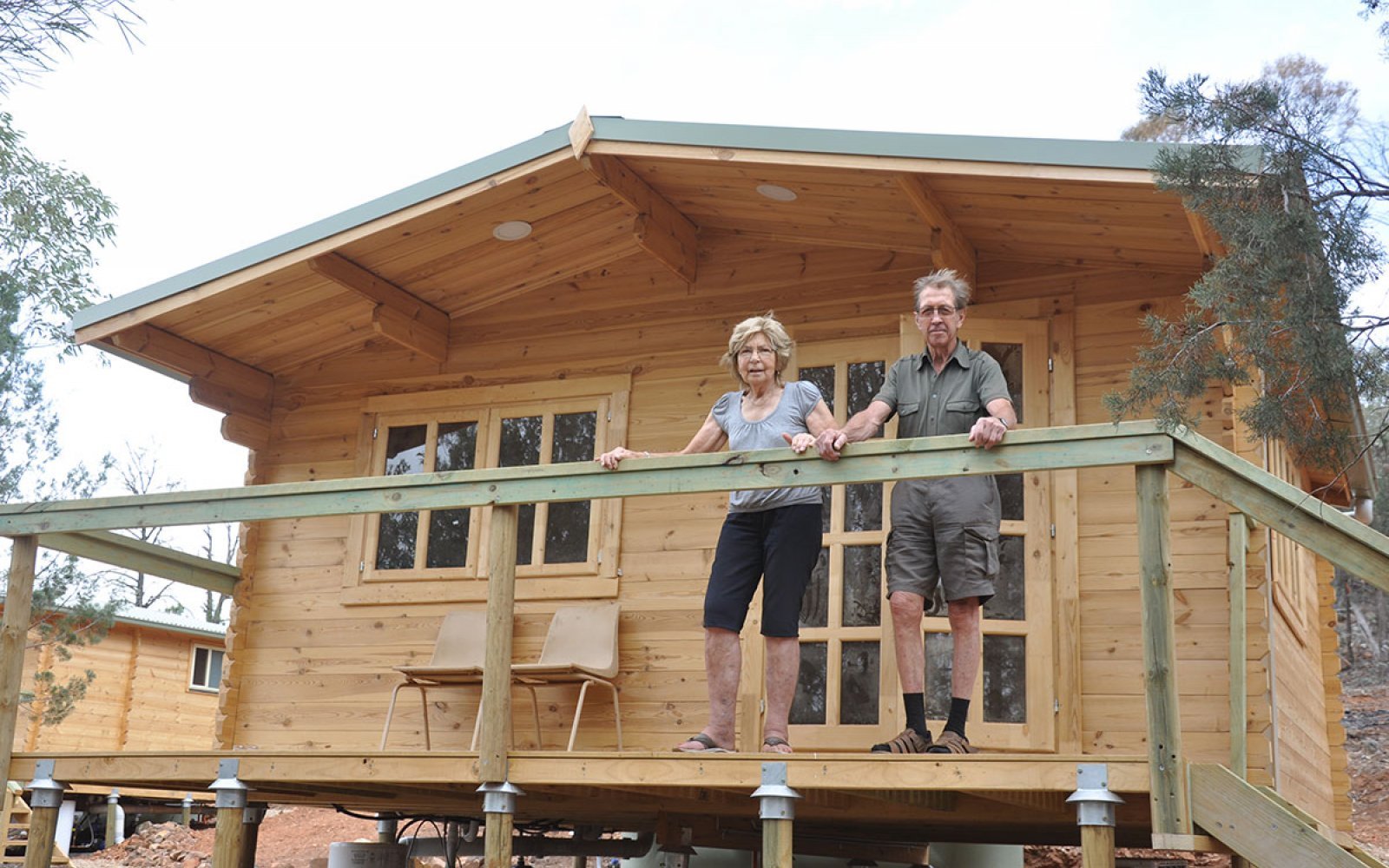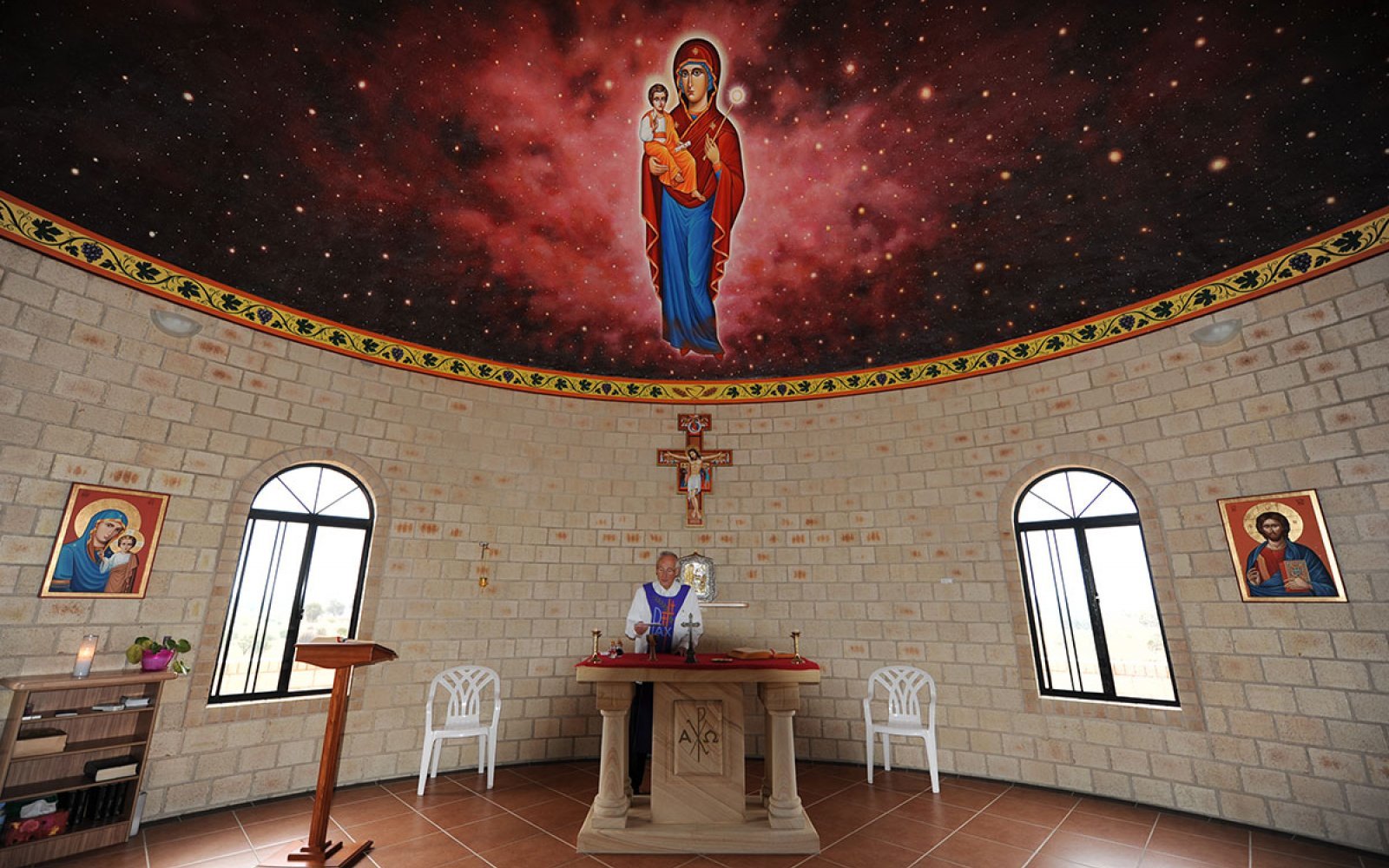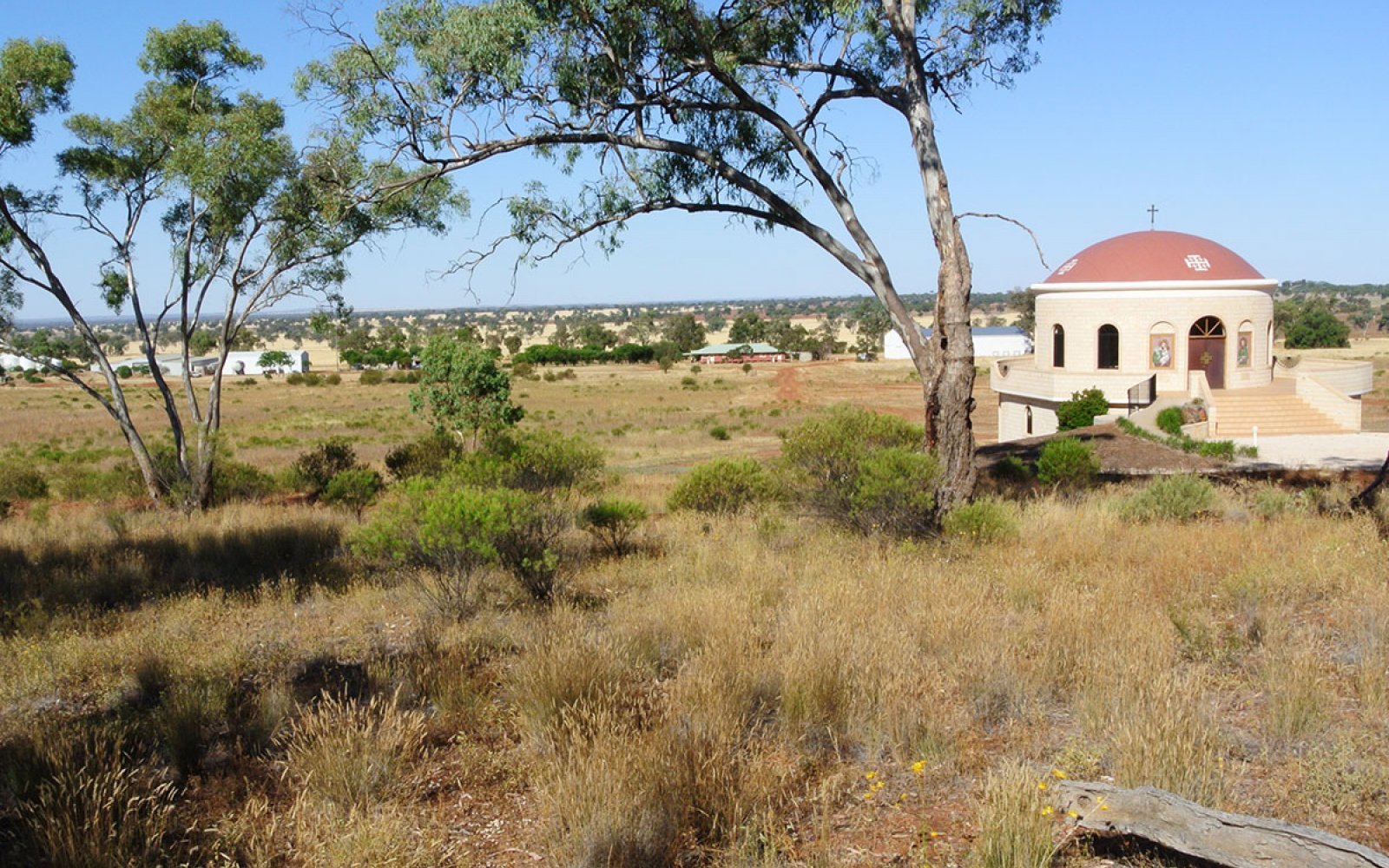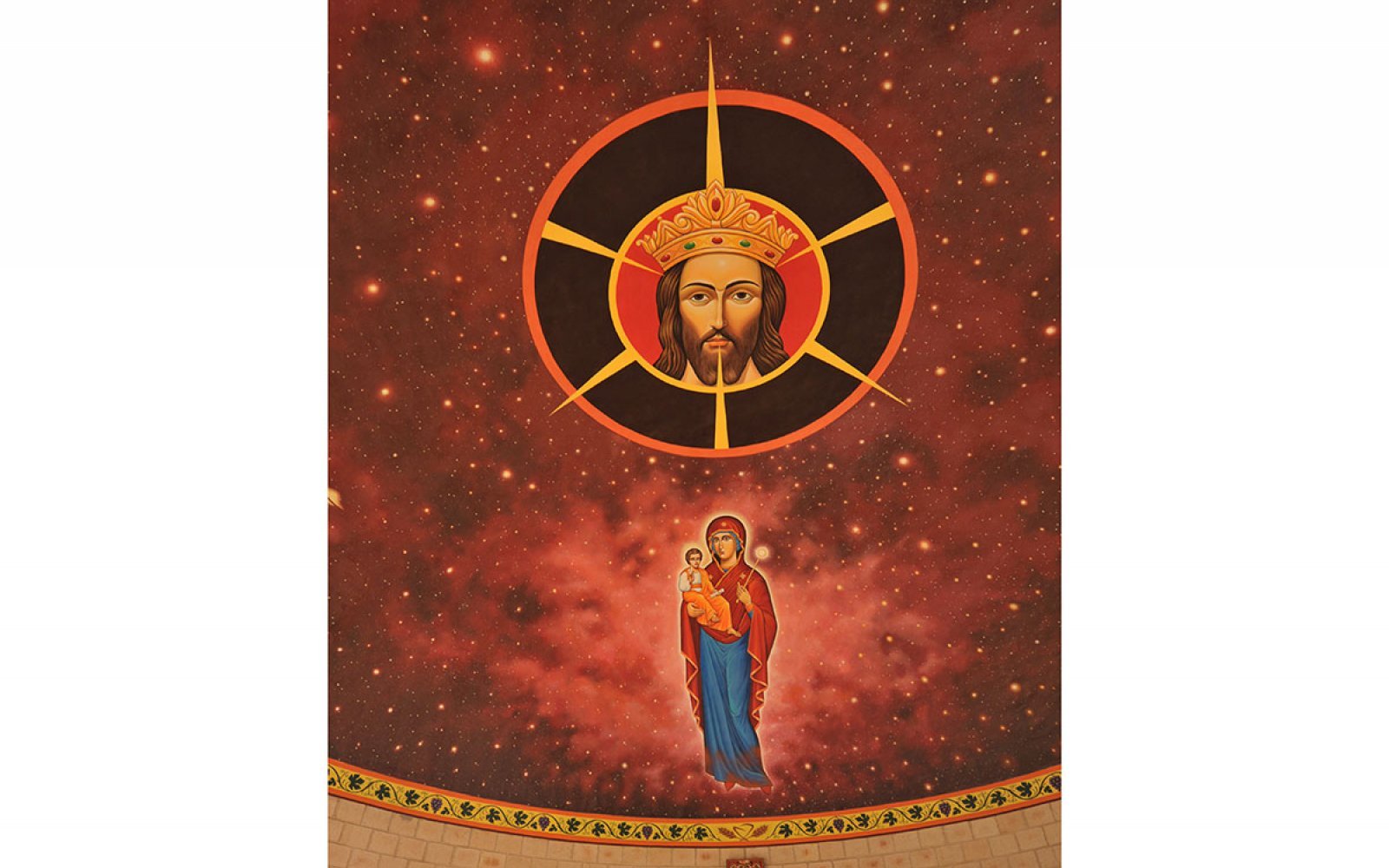Farm Chapel "Christ the King"
The first seeds of the idea for this farm chapel were planted during my childhood on our family property “Vorderrain” situated by Lake Lucerne and my memories of the farm chapel there. However, the farm chapel “Christ the King” is very different as its concept is the product of a dream and the inspiration of the visionary Swiss National Saint, Bruder Klaus, whose image is depicted in one of the frescos adorning the outside of the chapel.
The farm chapel “Christ the King” is located in central NSW, some 50 km west of the town of Condobolin, on a property bordering the meandering Lachlan River on the northern boundary for about 6 km. Traversing the property from north to south are the Goobothery (Booloon, “Bolo”) Hills. The highest peak of this range is Mt Bolo at 333 m high, at the base of which now stands the farm chapel surrounded by the homesteads and outbuildings of the farm. In total, the farms cover some 5000 hectares and produces organically grown wheat, oats and spelt next to grazing pastures for sheep and cattle. Interestingly, during the bountiful harvests of the 1990s, organic wheat and oats were exported to Switzerland for delivery to millers including Stadtmühle Zurich, Mühlebach, Meierhans and others. The milled product was then distributed throughout Switzerland through Migros and Coop as Biosuisse Certified Organic products. The complex logistics of delivering the product to Basel were handled from Australia by fellow Swiss friend Armin Oswald. Ultimately, like many farms throughout NSW, the low rainfall of more recent years stalled the growth of new crops and productivity was low for a number of years, affecting the ongoing exports. During this dry time of reflection, the seeds of the idea for the farm chapel grew and plans for its construction were born.
The farm chapel “Christ the King” is of a circular design, representing the form of eternity, with a bronze cross on the roof symbolising redemption through Jesus Christ. The domed roof is highlighted in the interior with a vast fresco adorning the ceiling. The outer roof is covered with tiles of 100mm x 100mm and displays four Jerusalem crosses, one in each direction. The building incorporates the chapel on the upper floor and a hermits’ residence on the ground floor. The Chapel is segmented into 12 x 30 degrees, representing the twelve tribes of Israel or the twelve Apostles. Every thirty degrees a window, door or mosaic is installed to complete the full circle. A gallery walk around the outside of the chapel displays three mosaics created over a period of months from thousands of finely cut and polished stones depicting:
A. Christ the Teacher
B. Saint Joseph with baby Jesus
C. Saint Nicholas von Flue
The interior of the chapel is engulfed by the fresco covering the domed ceiling (D), representing the universe and Christ the King. The painting takes the structure of a wheel, with the undivided Godhead in which all the saints rejoice at its very centre. Like the three rays, the three persons go forth from the one Godhead and embrace the heavens and the whole world. The icon (E) depicts the Virgin Mary, Queen of the Universe. In the right arm she carries the child Jesus and in the left hand she holds a monstrance with the Host as Logos, the divine Word and rational Principle that governs and develops the Universe, the spirit of all life.
A number of people were integral in bringing this farm chapel to life. Construction was led by Rudi Ehrat, a Swiss master builder known well in the Swiss community of NSW. The beautiful artwork was carried out by master artist Prof. Todor Velin from Bulgaria. Most of this work was carried out on the farm itself, with some in his studio in Sydney, with just one of the three mosaics taking nine months to complete. Prof. Velin then spent over a year painting the fresco on the domed interior while completing the remaining two mosaics.
By July 2008, construction of the farm chapel was complete and at its opening was blessed by his Grace Karl Hesse, Archbishop of Rabaul, Papua New Guinea, in the presence of hundreds of people. Many people and historical societies from near and far have visited the farm chapel since, with one visitor describing it a “present for the bush” in the guest book. Perhaps the chapel and its surrounding reminds us of the presence and beauty of God in today’s world, with the resounding echo from Saint Bruder Klaus - “pray to God, to Him surrender...”
Walter Bachmann
For the full leaflet please click the following link - FARM-CHAPEL-FLYER.pdf
The Farm Chapel is open for visitors. It now incorporates a hermitage. For more information please ring brother Dominic on 0457 692 735.



